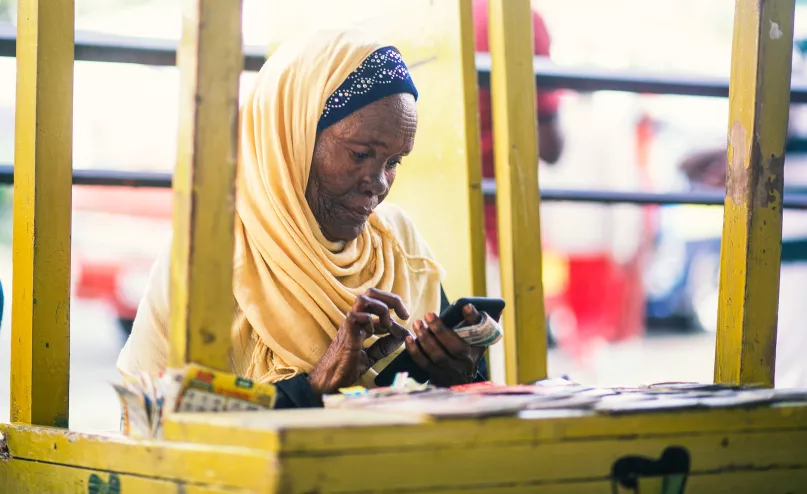Women's Financial Inclusion: The Smart Thing To Do

Women's financial inclusion is not just the right thing to do; it’s the smart thing to do.
Yes, you read that right! Two weeks ago, I attended the FinEquity annual meeting and WWB MFWW summit in Singapore and from the discussions, it became increasingly clear that there is a clear and compelling business case for women’s financial inclusion, yet the gender gap still persists. While there has been significant progress in closing this gap, change is moving at a glacial pace, calling for more pragmatic actions among different stakeholders. Below, I highlight some of my key takeaways from the two events.
Develop gender smart policies: Financial inclusion for women is not about enabling women, because they are capable in of themselves; it’s about creating an enabling environment to serve them better. Historically, norms around women’s role in the economy and society have prevented women from even getting to the doorsteps of financial institutions. Solving the right to be equal in the economy creates a great starting point for women’s financial inclusion. Regulators need to develop gender-inclusive policies that address the specific demand and supply-side barriers faced by women. These solutions cannot be found in policy meetings but at the last mile with women leading this change.
Pursue gender smart investing: With over half of the world’s population being women, it makes sense to pursue gender smart investing over gender-neutral investing. This requires the external deployment of capital into the hands of women and fixing the internal DNA of organizations to be gender intentional. Investors should integrate gender into their investment strategy by investing in businesses or products that pay attention to women’s inclusion. Moreover, empowering women means improving equality and encouraging innovation as well as inclusive growth and job creation. It’s not just about creating jobs, but creating jobs for women. Women bring certain know-how and complementarity to the labor force.
Design relevant products for the women: Women need to feel empowered by the products and not belittled. Often, providers try to convince clients to care about things they don’t care about, rather than finding out what they care about and designing products that match their lifestyle. Women should be included in the product development process. The more diverse the product development team, the more likely it is to develop great ideas for new products.
Offer physical engagement with clients that leverages digital channels (“Phygital”): Digital technology has proven effective in creating greater financial inclusion and is therefore an important part of the solution. However, counting on digital technology alone is a mistake, as it often requires human support. Combining human touch with high tech (Phygital) is a winning model to reach women with the financial services that they need.
Rethink financial literacy: Financial literacy should aim at shifting the mindset of women who are used to focusing solely on meeting their daily needs and who would benefit enormously from also focusing on their financial future. Often clients understand what they are doing with their finances, but they do not understand how financial institutions are trying to support them. Financial literacy should focus on digital literacy (technical know-how), educating clients on the benefits of building transaction history to gain access to other financial services, and driving behavior change to move women from cash to cashless.
Having quality data and actually using it is essential in closing the gender gap. We can’t tackle the gender gap without tackling the data gap. What is not counted does not exist. The lack of quality sex-disaggregated data in the industry jeopardizes women’s inclusion in the economy. Championing women’s financial inclusion entails being aware of the exclusion (with the support of data), setting clear objectives and metrics to track these changes, and embracing diversity and deliberateness in order to advance institutional gender diversity and inclusion goals.
Collaboration is key: There are many institutions doing small and disjointed activities and not learning enough from one other to improve their work on women’s financial inclusion. A greater level of co-creation is required to get relevant and sustainable solutions. Financial institutions should think around value-adding partnerships. Fintechs are a great place to start.



Thanks Clarissa for sharing the learnings from Singapore! It was a pleasure interacting with you at the event.
Oh yes i really enjoyed Singapore 2020. And for me as a woman first and foremost, was the fact that there is the need for male champions who will open the door of opportunities for women too as demonstrated by the lady from Nepal/Tibet mountain climber. But for the men mountain climbers who asked for some women to join them on the mountain trek to Mount Everest, her story and that of her team members would have been different.
The men already agreed there was a business case for sure. But even at home and the work place, we still need the male champions and advocates who will open the doors.
Then there was the former female governor who said it was until she was at a cabinet meeting that she realized she was a woman! She had always believed she was that professional and career woman, her gender never came up till at that high political level! She looked back and suddenly realized she was a woman and alone and wished that as she was going up the ladder she had carried other younger women along! But then it was too late because it was at the point when she was exiting that office, that reality of one’s gender hit her hard....
Oh i learnt so much from Singapore really.......i will keep the rest
Singapore was such a great experience and i do not regret sponsoring myself at all for it. Great lessons i took away.
Leave a comment